It looks like you're using an Ad Blocker.
Please white-list or disable AboveTopSecret.com in your ad-blocking tool.
Thank you.
Some features of ATS will be disabled while you continue to use an ad-blocker.
share:
a reply to: Deaf Alien
Went back online and it is nearing that area.
edit - it just went past the area. Need to figure out the next time it crosses over that area when it's night.
Went back online and it is nearing that area.
edit - it just went past the area. Need to figure out the next time it crosses over that area when it's night.
edit on 8/27/2014 by Deaf Alien
because: (no reason given)
originally posted by: snoopyuk
Hi there to all,
Many thanks to the OP for bringing this to ATS,
i am very surprised that nobody has mentioned the fact that the area that it took place is a well known
testing area for Russia,
especially the Russian peninsula of Kamchatka ;-)
well known for tests of `exotic ` weapons during the Cold -War.
snoopyuk
I mentioned earlier that perhaps this was some massive BRICS Naval exercise.
I'm actually starting to lean toward this explanation. Military ships often use red/orange lighting and some of the shapes just look too artificial. Like some of the yellow light spots clearly look rectangular.
Even the bright white light beam could have been some new weapons test, or even a superfast new ICBM type rocket. Maybe even something like SeaLaunch
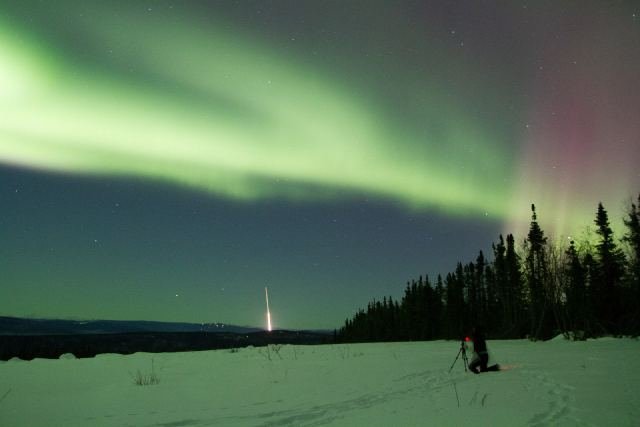
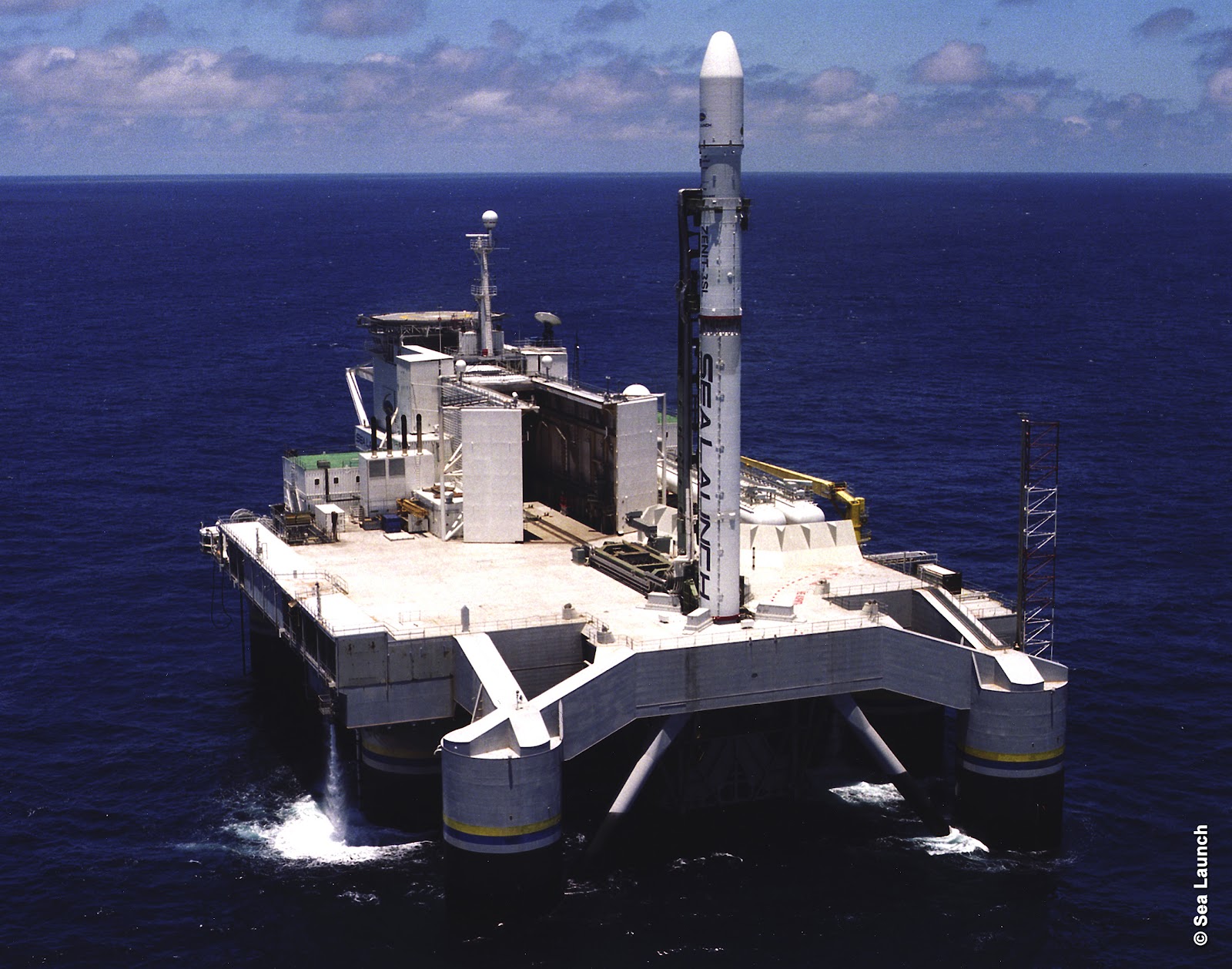
The military fleet has the right color also:
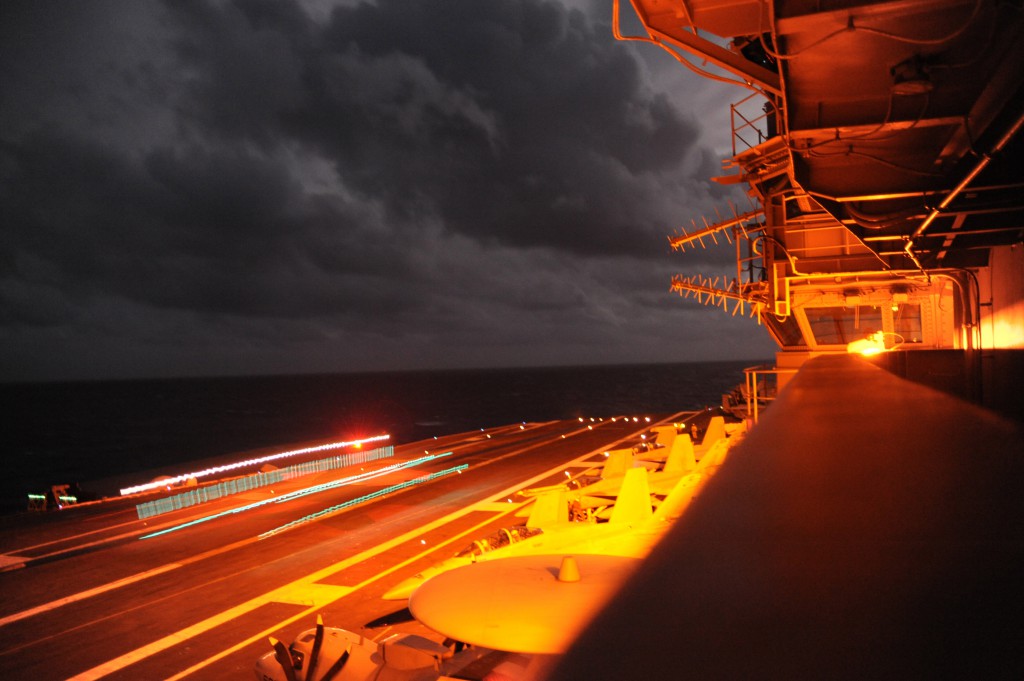
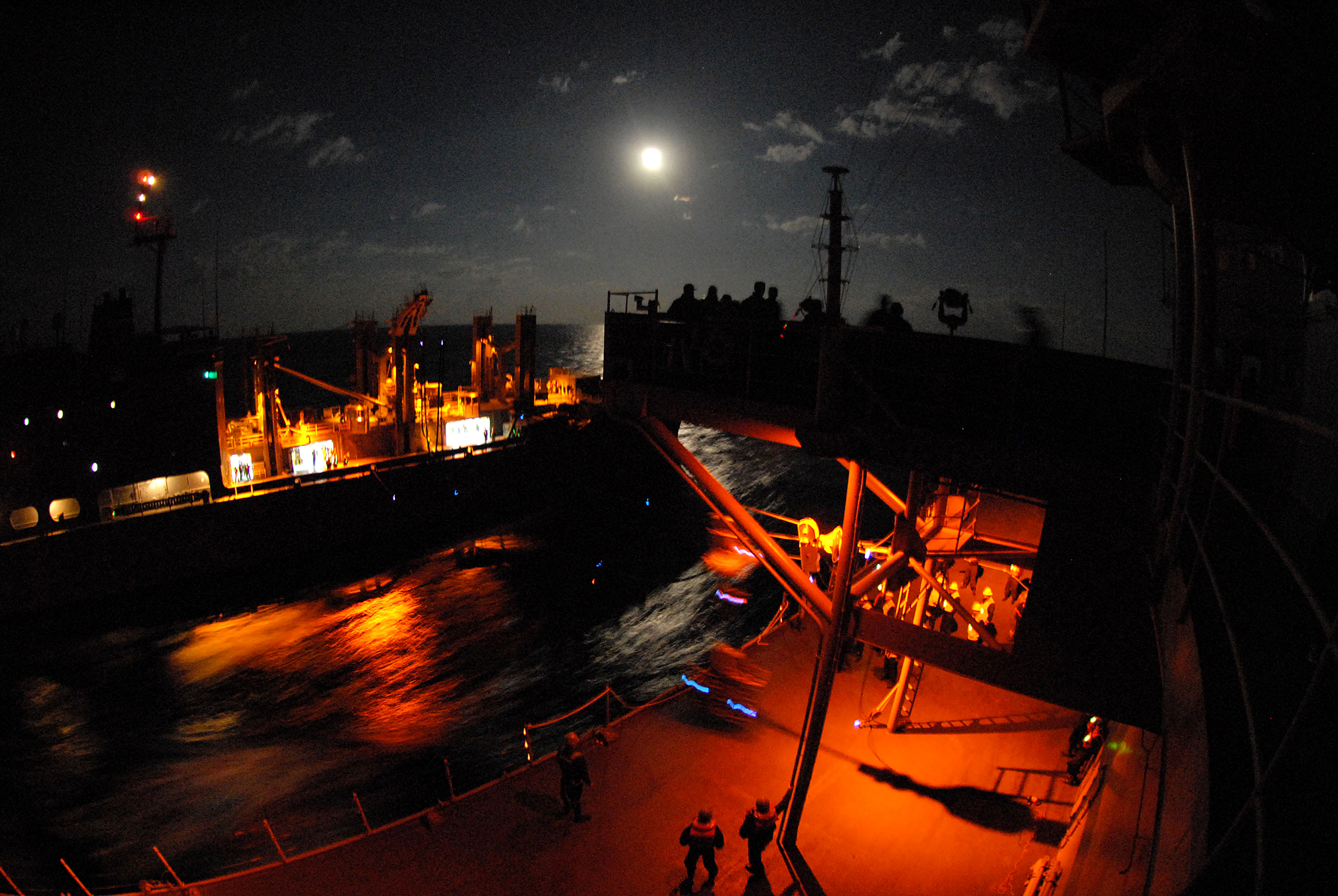
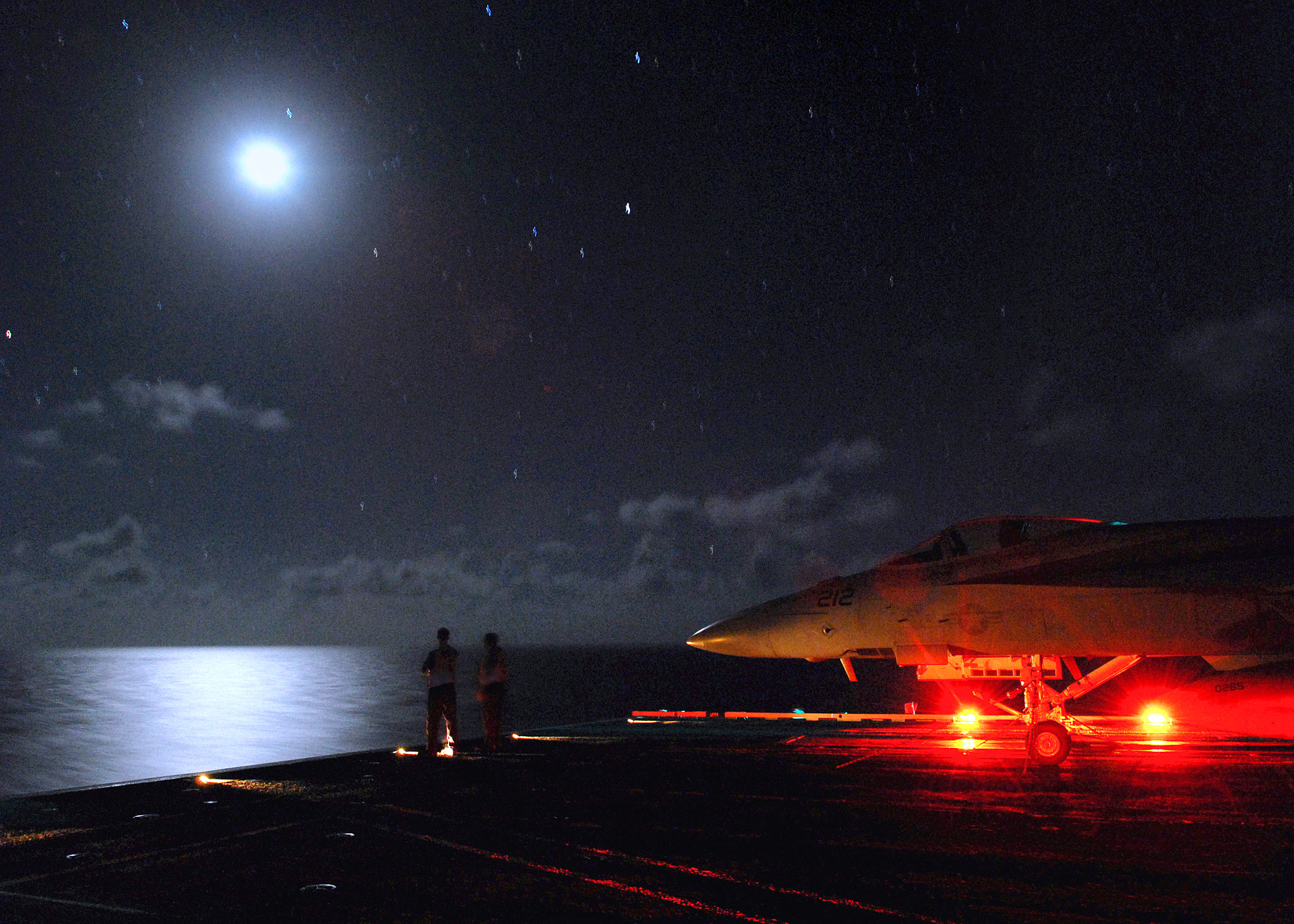
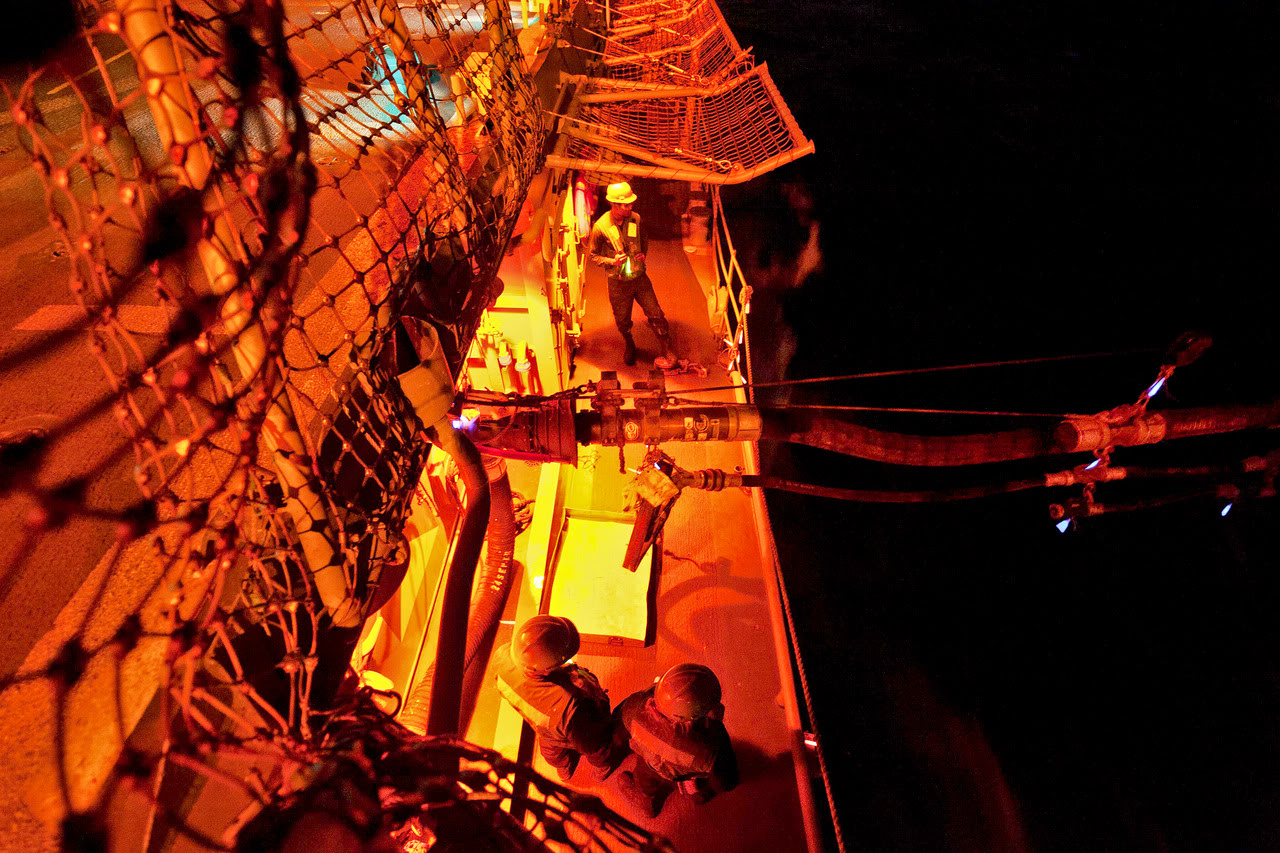
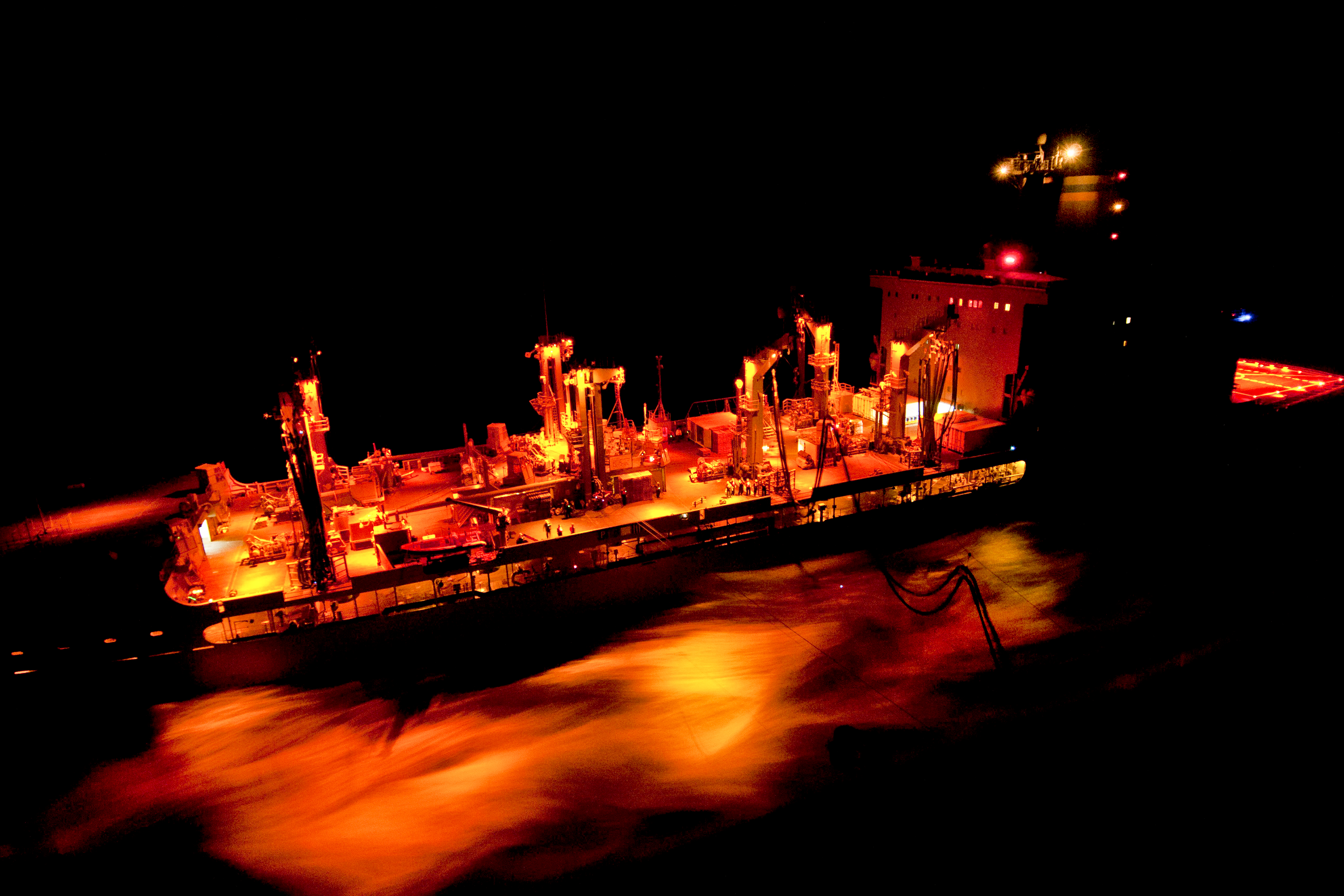
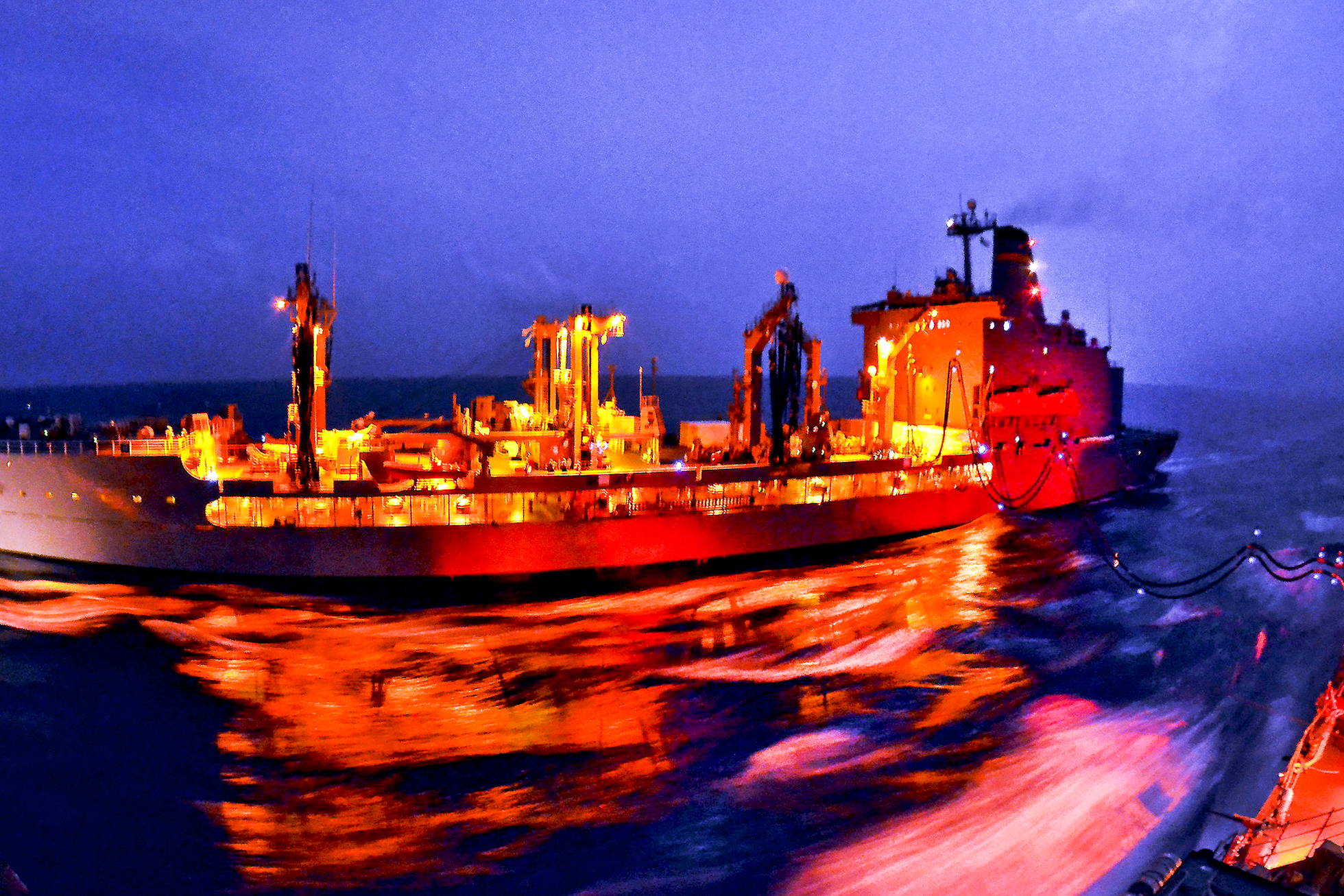
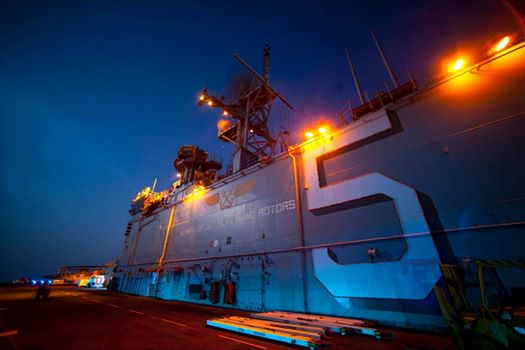
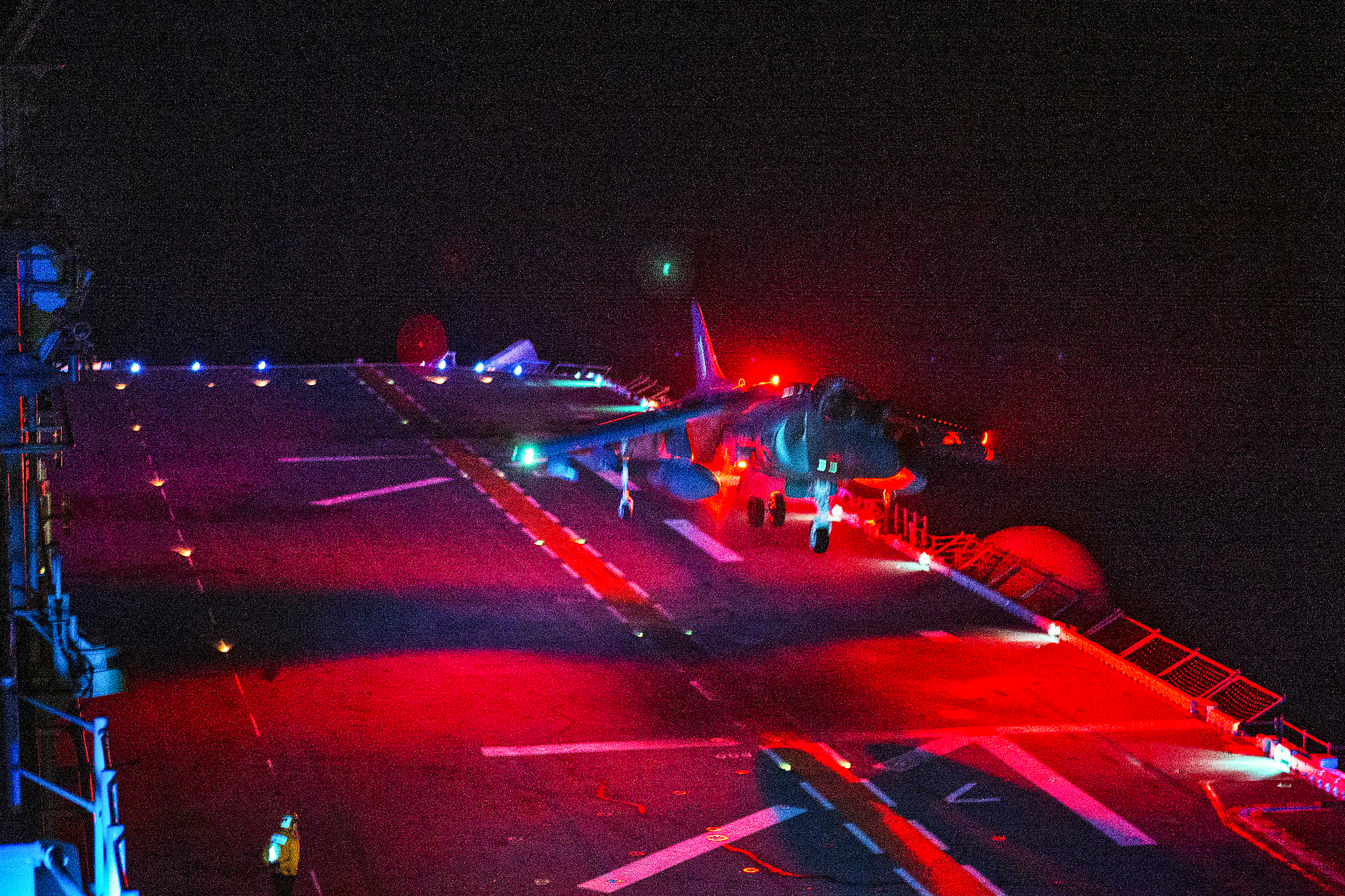
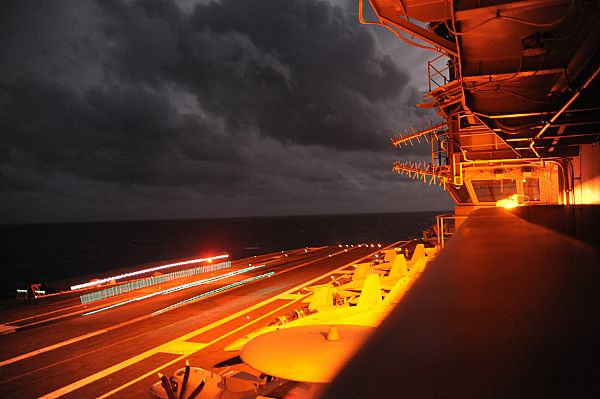
originally posted by: Deaf Alien
a reply to: 8675309jenny
Beautiful pictures.
But you need to realize how big of an area that was.
I do realize. If it was a fleet, it was numerous battle groups, and they were spread out in at least 2 patches 20miles apart. Large military exercises have a huge number of support ships like fuel tankers, frigates, communications ships, and god-knows what else if they were doing some super secret new missile test.
So if each light source was an individual ship, it's not an unreasonable number of vessels. I think the strange appearance might just be diffusion through thin low fog.
Taking the Occams razor approach here, the likeliest explanation is a powerful man made light source FLOATING on the water. It's far too deep in that location for an island to have popped up suddenly, and even if it was volcanic activity, the light might travel a couple hundred feet through water, but not thousands.
Also the ISO coupled with the exposure time, likely make the lights look brighter than they did in person. The human eye is pretty amazing in low light, but not 12,000ISO sensitivity.
I genuinely want it to be something more fascinating than some big military operation, but that's most likely what it was. Especially if we don't hear any MSM update.
a reply to: 8675309jenny
Taking the Occams razor approach here, the likeliest explanation is a powerful man made light source FLOATING on the water. It's far too deep in that location for an island to have popped up suddenly, and even if it was volcanic activity, the light might travel a couple hundred feet through water, but not thousands.
Yes but it is still big. Even for fishing fleet at that altitude.
edit on 8/28/2014 by Deaf Alien because: (no reason given)
Also the pilot would have been told to avoid the area if military exercises where underway, especially after the MH17 shoot down.
Well it's not doing too bad this one, 7.5k shares in a couple of days on the daily mail site.
I know its the daily mail and yes they suck, but at least its getting a bit of attention!
www.dailymail.co.uk... l
Looks like the favoured explanation is a volcanic eruption, but i'm still struggling to accept this..
Edit: Its actually getting loads of attention through various media outlets
I know its the daily mail and yes they suck, but at least its getting a bit of attention!
www.dailymail.co.uk... l
Looks like the favoured explanation is a volcanic eruption, but i'm still struggling to accept this..
Edit: Its actually getting loads of attention through various media outlets
edit on 28-8-2014 by bdotz because: (no reason given)
Errm, has anyone mentioned the fact that one of the largest volcanoes in the SOLAR SYSTEM is very close to where this photo was taken?
en.wikipedia.org...
en.wikipedia.org...
a reply to: bdotz
wow, thats awesome that this story got picked up on a news site. even if it is Daily Mail.co.uk
Some explanation is going to have to be given now that it's getting this kind of attention. I suppose that doesn't necessarily mean that it's going to be an accurate explanation. But, maybe we'll get a little closer to the truth with what this strange occurrence was.
i think others have made good point about what this can't be. If only we could get a picture taken in the same area after the incident took place. Then we could easily dismiss military training exercise or any kind of thing that involves man being an explanation.
wow, thats awesome that this story got picked up on a news site. even if it is Daily Mail.co.uk
Some explanation is going to have to be given now that it's getting this kind of attention. I suppose that doesn't necessarily mean that it's going to be an accurate explanation. But, maybe we'll get a little closer to the truth with what this strange occurrence was.
i think others have made good point about what this can't be. If only we could get a picture taken in the same area after the incident took place. Then we could easily dismiss military training exercise or any kind of thing that involves man being an explanation.
a reply to: Rezlooper
Yes, the location is off, but by how much really? If the volcano is deep under water, which it is, and the plane is very high above the water, which it is, couldn't a mix of water currents slowly pulling the lava to the surface (ie. not directly over the volcano) and perspective from such a high place cause this to be visible from where they were flying?
Yes, the location is off, but by how much really? If the volcano is deep under water, which it is, and the plane is very high above the water, which it is, couldn't a mix of water currents slowly pulling the lava to the surface (ie. not directly over the volcano) and perspective from such a high place cause this to be visible from where they were flying?
originally posted by: UKWO1Phot
Also the pilot would have been told to avoid the area if military exercises where underway, especially after the MH17 shoot down.
I actually wouldn't be surprised if this was some sort of salvage operation and they didn't issue a no-fly zone because they didn't want to alert anyone at all.
Any chatter about Russia losing a sub recently???
I know they just issued a new class sub to their Pacific fleet.
Tamu Massif is underneath some very strong currents. If it erupted and flung lava out in a certain direction and got caught up by currents and dragged
away from the feature itself for the 2 miles it had to travel to reach the surface, is it that hard to imagine it could have reached their flight
path? Wouldn't it also explain the explosion seen? If I recall from their story, there was some gap between them seeing the explosion and the lights
appearing too. Plus, it really does look like magma.
Hey Guys..
Thanks for the post OP...
I must say, when i first saw this i thought it may well be tectonic plate related.For those keeping track,this saga has most likely taken a step further and this is just a precursor before global adjustment.
Old Planet X is inbound..
Here is a link, with an explanation of what this 'incident' was..
poleshift.ning.com...
Stay good
Thanks for the post OP...
I must say, when i first saw this i thought it may well be tectonic plate related.For those keeping track,this saga has most likely taken a step further and this is just a precursor before global adjustment.
Old Planet X is inbound..
Here is a link, with an explanation of what this 'incident' was..
poleshift.ning.com...
Stay good
originally posted by: Dem0nc1eaner
Tamu Massif is underneath some very strong currents. If it erupted and flung lava out in a certain direction and got caught up by currents and dragged away from the feature itself for the 2 miles it had to travel to reach the surface, is it that hard to imagine it could have reached their flight path? Wouldn't it also explain the explosion seen? If I recall from their story, there was some gap between them seeing the explosion and the lights appearing too. Plus, it really does look like magma.
I don't think lava floats to the surface. Also it's not going to be anywhere near bright red after rising through 2 miles of water even if it did float.
Also the 2 mile vertical distance isn't the issue, it's the 1000mile distance that Tamu massif is from the location of this event.
a reply to: theabsolutetruth
I will do that, this was said by the photographer earlier:
Also, I want to thank moderator bigfatfurrytexan & admin 12m8keall2c for editing in the update that I had sent them per U2U.
I will do that, this was said by the photographer earlier:
Before and after no flashes were seen in the dark night, which is a bit odd in case of a thunderstorm. Also, it was strange that there was nothing to see on the weather radar later what could indicate a thunderstorm (although that is not conclusive (storms over the ocean are often less reflective than on land, thus sometimes can be difficult to be picked up by a weather radar onboard).
Also, I want to thank moderator bigfatfurrytexan & admin 12m8keall2c for editing in the update that I had sent them per U2U.
a reply to: 8675309jenny Why would the Military be doing exercises on a commercial flight path? Im not unerstanding that.
new topics
-
SCOTUS Chief Justice JOHN ROBERTS Ends 2024 Describing His Fears for Safety of U.S. Judges.
Above Politics: 4 hours ago -
How we've changed in 100 years
Ancient & Lost Civilizations: 10 hours ago -
US disburses $3.4 billion in budget aid for Ukraine, Yellen says
US Political Madness: 11 hours ago
top topics
-
I dont understand what i just witnessed
Social Issues and Civil Unrest: 14 hours ago, 12 flags -
US disburses $3.4 billion in budget aid for Ukraine, Yellen says
US Political Madness: 11 hours ago, 11 flags -
Happy New Year from Aussie
General Chit Chat: 17 hours ago, 9 flags -
How we've changed in 100 years
Ancient & Lost Civilizations: 10 hours ago, 8 flags -
Nigel Farage's New Year Message.
Politicians & People: 13 hours ago, 6 flags -
The Silent Motion…
Short Stories: 17 hours ago, 5 flags -
SCOTUS Chief Justice JOHN ROBERTS Ends 2024 Describing His Fears for Safety of U.S. Judges.
Above Politics: 4 hours ago, 3 flags
active topics
-
I dont understand what i just witnessed
Social Issues and Civil Unrest • 19 • : Myhandle -
Simulation theory and have we reset before like a game?
Conspiracies in Religions • 38 • : G1111B1234 -
SCOTUS Chief Justice JOHN ROBERTS Ends 2024 Describing His Fears for Safety of U.S. Judges.
Above Politics • 5 • : VariedcodeSole -
Get Ready - Here comes the Bird Flu Pandemic - Millions are Notified
Diseases and Pandemics • 56 • : rickymouse -
Reflections of Elections past
US Political Madness • 12 • : mysterioustranger -
-@TH3WH17ERABB17- -Q- ---TIME TO SHOW THE WORLD--- -Part- --44--
Dissecting Disinformation • 3872 • : duncanagain -
Strange fog all over the northern hemisphere
General Conspiracies • 37 • : annonentity -
The C.D.C. Says There Was NO INFLUENZA Worth Reporting for the 2020-2021 Flu Season.
Diseases and Pandemics • 56 • : KrustyKrab -
US disburses $3.4 billion in budget aid for Ukraine, Yellen says
US Political Madness • 18 • : Lazy88 -
House republicans prove to be drama queens
US Political Madness • 6 • : rickymouse
